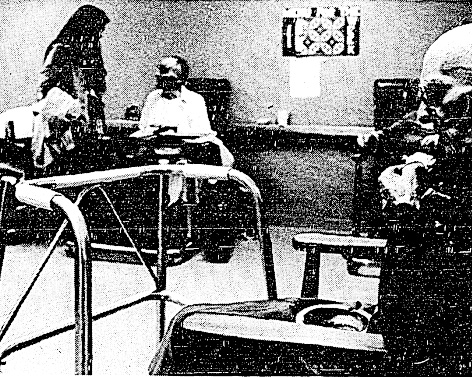
Snapshots from our Legacy
In the late 1970’s Public Advocates’ attorneys fought a remarkable number of cases that honored their pledge to provide access to the courts and high-powered legal representation to people who rarely had it.
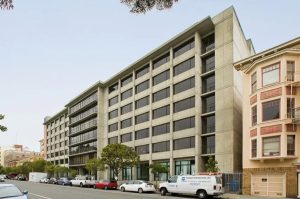
1230 Post St., today. Until mid-February 1978, approximately 300 patients resided there making it the largest convalescent nursing home in Northern California.
Bracco vs. Lackner was a case which showed just how high the stakes could be. It involved the San Franciscan Convalescent Center, a nursing home that housed some 300 residents, many poor people in their 80s and 90s on Medicaid.
“The case that touched my heart the most was the Bracco case, which involved a nursing home that at the time was located on Post Street in San Francisco. What happened in that case is that the owners of the nursing home decided that as housing in SF became more expensive, they could find a better use for the building. And so unilaterally and on very short notice, they decided to evict all of the residents of the nursing home without providing alternatives for them and without providing transitional help.” – Sid Wolinsky, Co-founder of Public Advocates.
The action could have gone unnoticed had it not been for the courage shown by a group of SF Convalescent Center Residents including resident leader Guy Bracco, who decided they would not tolerate being treated “like freight.”
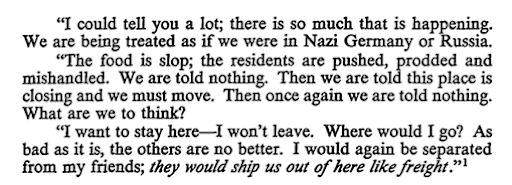
Guy Bracco, 1978 Bracco vs. Lackner file
By the time the resistance started, residents were already being moved against their will. At the time 81-year old resident Florence Coffman told the LA Times she’d seen a group of patients in the hallway one day – some crying, some in wheelchairs. “It was the most depressing sight I ever saw,” said Coffman. “I was not shoved in here, and I’m not going to be shoved out,” she said.
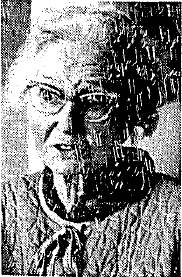
Florence Coffman. Photo: “Elderly Patients in Fight for Rights” by Harriet Stix, Los Angeles Times, Apr. 20, 1978
The residents mobilized with the help of the SF chapter of the Gray Panthers. In February, 1978, they held a press conference. Maureen Oddone wrote a story about the resident’s effort in The Gray Panther Network newspaper:
“The resident’s first action was to call a press conference. With a magnifying glass, 86-year-old Mary Baldwin read a written statement that announced their determination “to remain with our friends and near our loved ones and families.” Their next move was to request support from the Gray Panthers. The Panthers, in turn, approached Public Advocates, Inc., a public interest law firm, to represent those of the residents who wanted an attorney. Public Advocates immediately went into court on behalf of 70 of the residents and their families.”
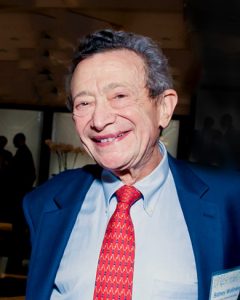
Sid Wolinsky, Public Advocates Co-Founder and lead attorney on the case.
Sid Wolinsky led the legal fight in support of the residents with staff attorney Angela Glover Blackwell. In early March they filed a lawsuit against the California Health Dept. on behalf of the patients in the US District Court for the Northern District of California. The suit sought to stop the transfers and compel the state to operate the facility with state funds until either a plan to continue its operation was implemented, or the residents could be transferred to another facility in San Francisco in an orderly and humane manner.
To prepare for the lawsuit, Angela Glover Blackwell, who was interviewed last year by Public Advocates, recalls speaking with one resident after another about their condition and their fear.
“It was a heartbreaker because it was about horrendous conditions in nursing homes. And we had to visit those nursing homes. And I had not visited nursing homes before. I had not had relatives that had been in nursing homes. Boy, it is a tough experience. They smelled bad. The people were neglected just in their rooms or sitting in a wheelchair in a hallway. People had bed sores, they were sad and lonely. And I had to go in and interview them and take statements from them and try to figure out what was going on.”
What was going on was the transfer of frail, sick elderly residents against their will. Soon it was clear that many of these residents were not surviving the transfers.
“Using expert testimony,” explained Sid Wolinsky, “we employed a concept known as “transfer trauma” to try to stop the terrible treatment of these residents. We argued that when you moved elderly people who were in a place like the nursing home, particularly if they’d been there for years, their morbidity and their mortality rates both went up! There was no reason why you had to inflict that kind of pain upon vulnerable people.”
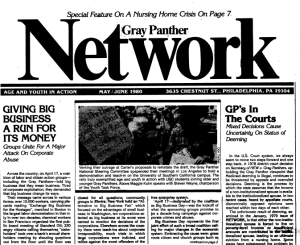
Gray Panther Network May/June 1980 had a “Special Feature on a Nursing Home Crisis On Page 7”
Public Advocates eventually secured a court-ordered preliminary injunction stopping the nursing home from transferring the elderly residents. The complaint was fought all the way up to the Ninth Circuit Court of Appeals.
“We prevailed in the ninth circuit with the court holding in the Post Street nursing home case that transfer trauma was real and significant and needed to be taken into account. This concept is still part of the Ninth Circuit law. I’ve never forgotten a stirring opinion issued by Judge Stanley Weigel, a conservative Republican, in April of 1978.”
Judge Weigel wrote in his opinion in Bracco v. Lackner: “What caused all this fear, havoc, injury and misery? Was it a war, flood, tidal wave, earthquake or other terrifying Act of God? Not at all. It was the decision of a large State bureaucracy, not unaided by a huge federal bureaucracy, requiring these helpless, elderly patients to move out in a hurry, without reasonable advance notice of that decision so vitally affecting them and without an opportunity to be heard.”
The battle was waged by the residents for almost 6 months with Public Advocates attorneys searching for a legal resolution. But it was too late for many of the residents. Plaintiff Guy Bracco was eventually transferred to another nursing home and died three months later. The court ordered transfers to stop and the state to pay for the resident’s care. But California, under Jerry Brown’s first term as Governor, defied the order, leaving residents and their supporters and attorneys fearing a forced evacuation of the residents that was terrifying to consider. The movement grew. There was even an unprecedented nationally televised hearing by members of the US House of Representatives at the home where residents testified about the true meaning of “relocation shock” – or transfer trauma as it came to be known.
In July of 1978, the last of the residents was wheeled out of the home. With just a partial win in the case – the recognition of transfer trauma as a concept that remained part of the Ninth Circuit law – Public Advocates attorneys Wolinsky and Glover Blackwell went on to file class-action litigation on behalf of some 66,000 MediCal recipients residing in nursing homes. In part, to continue to address the conditions facing so many poor nursing home residents whose care was drastically underfunded.
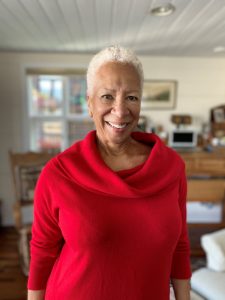
Angela Glover Blackwell
Angela Glover Blackwell, who was a young lawyer at the time, said she was deeply affected throughout her career by the San Franciscan Convalescent Center case. “There are real lives connected to what it is that we are trying to do – real lives, real people, real suffering, people who are dependent on you to do your best and make it better… It is not enough to work on this. You gotta make it better.”
Glover Blackwell went on to dedicate her work and life to social and racial justice, founding PolicyLink.
Sid Wolinsky went on to co-found Disability Rights Advocates, and dedicate decades of his life and work to advocating for the elderly and people with disabilities.
“Personally, the experience of going into that nursing home and meeting one person after the other who were disabled, in their seventies and eighties and even older, left a lasting effect,” said Wolinsky. “It led me to want to work on behalf of people with disabilities, which is what I’ve done ever since I left Public Advocates.”
Lately, Sid Wolinsky has been working with other lawyers to prevent patients from being evicted from Laguna Honda Hospital in San Francisco. He told us that while conducting research, he came across California health and safety code 1336. “To my surprise, I was pleased to see that it essentially embodies in regulations the remedy and victory that we achieved in the Bracco Post Street nursing home litigation.”
He added that “the fight for justice on behalf of our most vulnerable never ends. Now at Laguna Honda the same terrible scenario is playing out for some 750 residents that the bureaucrats want to throw out.”
Photo (top): Appeared in “Elderly Patients in Fight for Rights” by Harriet Stix, Los Angeles Times, Apr. 20, 1978. John McDermott